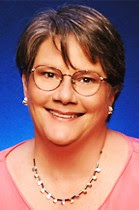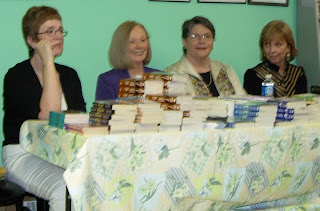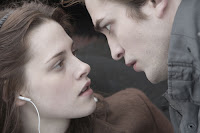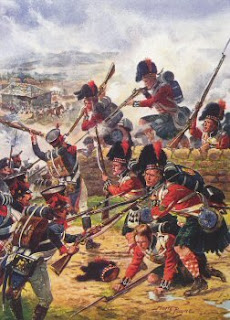 (Diane here) Today we welcome back one of my best friends, Mary Blayney. Mary visited the Riskies just a year ago for the release of her novella Amy and The Earl’s Amazing Adventure in JD Robb’s anthology DEAD OF NIGHT. Today I’m delighted to tell you Mary Blayney is BACK!
(Diane here) Today we welcome back one of my best friends, Mary Blayney. Mary visited the Riskies just a year ago for the release of her novella Amy and The Earl’s Amazing Adventure in JD Robb’s anthology DEAD OF NIGHT. Today I’m delighted to tell you Mary Blayney is BACK!
Not only does she have a new novella but she’s back on the Romance bookshelves with her exciting single title double debut, TRAITOR’S KISS/LOVER’S KISS. I’ve been waiting for this ever since her last Kensington Regency, THE CAPTAIN’S MERMAID. I’ve missed Mary’s quiet, elegant writing. The novellas were just not enough to quench that thirst. Well, this month I’ve been happily drowning in Mary Blayney stories. Bantam released TRAITOR’S KISS/LOVER’S KISS on Oct 28 followed by Berkley’s release of the new JD Robb anthology SUITE 606 on Nov 4.
Whoo hoo!
Mary will give away one signed copy of TRAITOR’S KISS/LOVER’S KISS and one copy of SUITE 606 signed by ALL the authors: JD Robb, Ruth Ryan Langan, Mary Kay McComas, and Mary. We’ll pick the winners at random from our lovely commenters.
Heerrreee’s, Mary!
1. Tell us about TRAITOR’S KISS and LOVER’S KISS, your double book and the start of the Pennistan family series.
 TRAITOR’S KISS and LOVER’S KISS is the launch of a new series I’m writing for Bantam. It offers two full length novels in one volume for the amazing price of $6.99. I’m delighted with all Bantam has done to make this series available to readers and am happy to note it is in bookstores everywhere and Target, Walmart and Kmart.
TRAITOR’S KISS and LOVER’S KISS is the launch of a new series I’m writing for Bantam. It offers two full length novels in one volume for the amazing price of $6.99. I’m delighted with all Bantam has done to make this series available to readers and am happy to note it is in bookstores everywhere and Target, Walmart and Kmart.
The Pennistan Family has been titled almost as long as there have been kings in England. Now a ducal family, the main seat of the Duke of Meryon is Pennford Castle in Derbyshire, near the Peak District, beautifully illustrated on the cover of TRAITOR’S KISS and LOVER’S KISS. As the series open, we meet the five children of the second Duke of Meryon: the third duke, his three brothers and one sister. There is also an illegitimate brother who is on the periphery of their life, Capt Robert Wilton, happily married and living far away in Sussex.
TRAITOR’S KISS is my salute to the Scarlet Pimpernel. From the first page the reader knows it – if not from the heroine’s name, which is Charlotte Parnell – then from what happens in the opening scene.
 The year is 1814 and Lord Gabriel Pennistan has been in a French prison for eight months, apparently forgotten as Napoleon’s efforts to rule the world fall apart. He has no idea why he was taken from Spain to LeHavre after witnessing the death of seven men. Why was he not murdered as well?
The year is 1814 and Lord Gabriel Pennistan has been in a French prison for eight months, apparently forgotten as Napoleon’s efforts to rule the world fall apart. He has no idea why he was taken from Spain to LeHavre after witnessing the death of seven men. Why was he not murdered as well?
When a priest and a nun come to his cell, his confusion grows and not only because the nun is wearing perfume. It is one more question in a long, long list for which he is determined to find explanations. As the story unfolds Gabriel finds answers to all of them though not as quickly as he would like.
LOVER’S KISS opens in the spring of 1816, the year without a summer. Michael Garrett is on this way to Manchester, after deciding that he will not use his letter of introduction to the Duke of Meryon. His time in the army is all the proof he needs that he does not take commands well. How would working for a duke be different than taking orders from his colonel?
His plans change when he comes upon a naked woman wandering in the woods, desperate and near death. He saves her life and tries to gain her trust and when he finds out her real name he realizes that he will have to meet the Duke of Meryon after all.
2.This double-book marks your return to novel length Regencies. What are the differences, if any, between writing longer, single-title length novels and writing traditional Regencies?
For me the most significant difference is that a longer historical involves more of the world of Regency politics, history and the world-changing aspects of a period that is on the cusp of change. All the Pennistans are involved in this. Gabriel’s world revolves around the end of the Napoleonic War. Michael and Olivia are a sign that the world is changing and the roles we expect people to play will no longer apply.
For the duke in STRANGERS KISS, the next in the series, I am writing about a man who sees change and wants to make the right choices for the right reasons.
Despite what I just wrote, romance is at the heart of story, but you did ask what was different for me. No matter what I write, the relationships among all the characters are what fascinates me the most.
3. What is risky about TRAITOR’S KISS and LOVER’S KISS?
TRAITOR’S KISS: a story which is essentially a role reversal – where the woman is rescuing the man – how do you keep the hero from being a wimp?
LOVER’S KISS: all those alpha males in one castle. How do you keep them from fighting to the death for the right to be boss? (Hint: there is a boxing ring involved)
4. Cut-paper transparencies feature in TRAITOR’S KISS. Can you tell us about this little known Regency art form?
Cut-paper transparencies are layers and layers of varying weights of paper colored from white, to cream, gray and sometimes red and black and blue that are cut out and glued in layers to represent a scene.
The silhouettes aka cut-paper transparencies that I have seen are not much bigger than six by eight inches. They feature everything from a volcano erupting (complete with red paper for the lava) to a scene by a lake in great detail: a man in boat, a horse grazing under a tree on a piece of fenced in land, with a mountain in the background. Think small and exquisite detail.
Once complete, the tansparencies are set in a window and the sun brings the piece to life. They are very fragile which is why so few survived the period.
What is just as interesting about my experience of them is the serendipity of discovery. Diane Gaston (!) and I were visiting the Metropolitan Museum of Art In NYC – we walked through a hallway that had new acquisitions on display. We walked through that hallway THRRE times and each time I glimpsed a small, well lit, fascinating silhouette-like display. Finally, some angel nudged me and I said to Diane., “Let’s take a minute and look at these” I knew then I wanted to use them in a book and I am delighted I found a significant way to use them in TRAITOR’S KISS.
If you are inclined to visit the Met to see them you will have to make an appointment as they are no longer on display. They are however, very available if you ask.
(I’ve never forgotten those transparencies! I remember reading off the information on the display while Mary wrote it down. How amazing that we two Regency fanatics discovered them together.)
 5. Tell us about Love Endures in SUITE 606?
5. Tell us about Love Endures in SUITE 606?
The idea for “Love Endures” has been around a long time. In one of my Kensington traditional regencies, THE PLEASURE OF HIS COMPANY, there was a scene where a woman wearing mourning comes into an ever so slightly risqué party (it is a trad Regency after all.) She throws money at the feet of one of the guests and leaves. I knew what the story was but never had a chance to tell it until SUITE 606. I had to make a number of changes for a number of reasons but at the heart of it Summer Cassidy and Steven Bradley are clones of Lucy Brevier and Lord Ian: would be lovers manipulated by a third until death makes all things possible–if only they can see through the lies and the ghostly efforts of the dead man.
6. Do you, J.D. Robb, Ruth Ryan Langan, and Mary Kay McComas collaborate on the stories you contribute to the anthology? How does this all work?
No we don’t collaborate. That said, in Mary Kay’s SUITE 606 novella ‘Wayward Wizard,’ her time traveling characters appear in each of the other novellas. Lots of fun but the only instance in which we have ever worked together in any way.
 As it has developed over the years, an umbrella title is suggested and we write a novella using as much of that title as we want. In 606, the suite is at the heart of JD Robb’s novella. In Mary Kay McComas’s it gets a single LOL mention, an aside really, but very cleverly done.
As it has developed over the years, an umbrella title is suggested and we write a novella using as much of that title as we want. In 606, the suite is at the heart of JD Robb’s novella. In Mary Kay McComas’s it gets a single LOL mention, an aside really, but very cleverly done.
The only thing the stories have in common is that they must have a paranormal element. I think of it as a romance sampler.
7. What’s next for you?
Lynford Pennistan’s, story. He is better known as the third Duke of Meryon. Yes, he is married during the first two KISS novels but in the epilogue of LOVER’S KISS, his wife has died. STRANGER’S KISS opens as Meryon returns to the London social whirl.
Then (she says without pausing for breath), as soon as I send STRANGER’S KISS to my editor, I have to finish the next novella (the fourth anthology if you’re keeping track). It’s the story of a man cursed since 1810 and the woman whose singing (and love) frees him.
Both of these will be out in the second half of 2009.
I can’t wait!
Thanks for visiting Risky Regencies, Mary.
Remember, Mary’s giving away 2 free books so tell her what you think of her books or ask her a question or some comment to put you in the running to win.
Winners will be picked monday night and announced Tuesday before Cara’s blog.

 Edward Cullen, who was standing across the park at that time, was somehow able to render me assistance. He stopped the course of the van, and raised it from the ground, but my head had been injured in my fall, and I was scarcely able to stand. The pale gentleman offered me his services; and perceiving that my modesty declined what my situation rendered necessary, took me up in his arms without farther delay, and carried me past the van. Moving through the park, he bore me directly to the ambulance, whither the EMTs were busily working, and quitted not his hold till he had placed me onto the stretcher.
Edward Cullen, who was standing across the park at that time, was somehow able to render me assistance. He stopped the course of the van, and raised it from the ground, but my head had been injured in my fall, and I was scarcely able to stand. The pale gentleman offered me his services; and perceiving that my modesty declined what my situation rendered necessary, took me up in his arms without farther delay, and carried me past the van. Moving through the park, he bore me directly to the ambulance, whither the EMTs were busily working, and quitted not his hold till he had placed me onto the stretcher. The remaining Cullens rose up in amazement at this, and while the eyes of all were fixed on me with an evident wonder, mine were fixed on Edward from a secret admiration which equally sprung from his exceedingly comely appearance and the wintery temperature of his hands. He apologized for his boldness in a manner so frank and so graceful that his person, which was uncommonly handsome, received additional charms from his voice and expression. Had he seemed old, ugly, and tan, my gratitude and kindness would have been secured by any such act of heroism; but the appearance of youth, beauty, and elegance, coupled with an occasional attractive sparkle, gave an interest to the action which came home to my feelings.
The remaining Cullens rose up in amazement at this, and while the eyes of all were fixed on me with an evident wonder, mine were fixed on Edward from a secret admiration which equally sprung from his exceedingly comely appearance and the wintery temperature of his hands. He apologized for his boldness in a manner so frank and so graceful that his person, which was uncommonly handsome, received additional charms from his voice and expression. Had he seemed old, ugly, and tan, my gratitude and kindness would have been secured by any such act of heroism; but the appearance of youth, beauty, and elegance, coupled with an occasional attractive sparkle, gave an interest to the action which came home to my feelings. Indeed, his manly beauty and more than common gracefulness were instantly the theme of my intense admiration. His person and air were equal to what my fancy had ever drawn for the hero of a favourite story; and in his stopping the course of the van with one cold hand when he had a moment before been standing across the park, there was a rapidity of movement which particularly recommended him to me. Every circumstance belonging to him was interesting. His name was good, his skin colour matched my favourite blouse, and I soon found out that of all manly hair colours, bronze was the most becoming.
Indeed, his manly beauty and more than common gracefulness were instantly the theme of my intense admiration. His person and air were equal to what my fancy had ever drawn for the hero of a favourite story; and in his stopping the course of the van with one cold hand when he had a moment before been standing across the park, there was a rapidity of movement which particularly recommended him to me. Every circumstance belonging to him was interesting. His name was good, his skin colour matched my favourite blouse, and I soon found out that of all manly hair colours, bronze was the most becoming. 

















